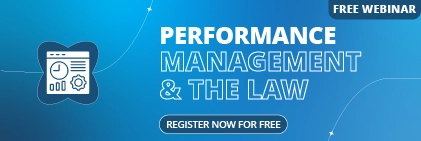Your team is your best asset, and it’s essential that they perform at their peak. At its core, building these teams requires strong and effective performance management. This involves a strategic process of continuous improvement, aligning individual employees with the broader company. Through this, HR managers are able to foster a culture of learning and excellence, enhancing your employees in all aspects. Mastering performance management is crucial to ensure employees are motivated to do their best, and have the tools to support their growth.
We’ll explore how a robust performance management system can transform teams into high performing units. With a deep dive into its key components, best practices, and common challenges, we’ll cover everything you’ll face – and more. No matter if you’re refining existing processes, or looking to implement a new system, we’ll provide practical insights to help your team, and business, succeed.
What is Performance Management?
Employee performance management is the process of continuous improvement through communication between managers and employees. Put simply, it’s how you, as a manager, improve your team’s productivity. It allows you to assess job responsibilities, set expectations, evaluate performance, and plan development. Unlike annual reviews, performance management focuses on prioritising continuous feedback. This aligns individual goals with organisational objectives, driving more growth for the team. It’s all about empowering your employees to maximise their potential, and in turn transforming those efforts into tangible results for the business.
Importance of Performance Management in Building High-Performing Teams
An effective performance management system builds high-performing teams. It provides a structured framework to:
- Align Goals: Ensures all team members understand how their roles contribute to organisational success.
- Drive Improvement: Offers regular feedback and development opportunities to enhance skills.
- Boost Engagement: Increases motivation by valuing employees and showing clear growth paths for their future.
- Improve Retention: Retains talent by prioritising development and success.
- Enhance Success: Aligns teams to achieve goals and outperform competitors.
Key Components of Effective Performance Management
1. Goal Setting
Setting goals properly can be a challenge. Despite this, goal setting should be considered the foundation of performance management. Clear and achievable goals align your teams’ efforts with structural objectives that the business needs to achieve. Individual goals should support the team as a whole. Goals should be S.M.A.R.T (Specific, Measurable, Achievable, Relevant, and Time-bound) to ensure clarity in the team. You can also incorporate goals that seem out of reach on the surface, commonly known as “stretch goals.” These can inspire innovation and motivation simultaneously.
2. Regular Feedback
Regular and consistent feedback drives growth. Annual reviews are too slow to drive significant change. It is advisable to schedule weekly check-ins for your most essential teams and monthly reviews for your other teams. These practices assist in adhering to deadlines and sustaining team morale. There are two types of feedback: formal, which is structured reviews, and informal, which are your typical daily interactions. For example, managers can provide immediate feedback in project meetings, preventing unnecessary delays. ‘Feedforward’ can be used to focus on future improvements rather than past errors. This fosters a positive culture within the team and business.
3. Coaching and Development
Coaching helps employees fill in skill gaps and grow. This is mainly accomplished through the two following areas:
Identifying needs: Use performance reviews and self-assessments to highlight areas for improvement, like communication skills for a team leader.
Providing resources: Offer training, mentorship, or stretch assignments (usually a task or project that goes beyond their current skill level or experience to help them grow).
4. Performance Evaluation
Evaluations provide a comprehensive view of performance across the team. This often entails using KPIs and 360-Degree feedback to indicate a level of success or failure. 360-Degree feedback uses input from managers, peers, and subordinates for a holistic view. This helps address any and all blind spots, improving KPIs and plugging any gaps in your processes or data.
5. Recognition and Rewards
Recognition motivates employees and reinforces positive behaviour. This includes monetary rewards, such as bonuses, but also encompasses non-monetary rewards such as awards or praise. These rewards should be linked to employee performance and specific metrics such as sales targets. The emphasis should be on non-financial motivators, which are often more effective than simply throwing money at your team. These motivators, such as leadership attention, can be capitalised on by the employee to grow their career.
Best Practices for Implementing Performance Management
-
Aligning Individual Goals with Team and Organisational Objectives
Use cascading goals to drive your team forward. Break down organisational objectives into team and individual targets. For example, a business aiming to increase market share might set team goals for product launches and individual goals for sales calls. This allows teams to focus on separate priorities while still having an overall focus on the overarching business objective. To ensure clarity in these processes, communicate regularly and document all actions to be analysed later. Goal setting in performance management is a tool that allows businesses to improve productivity without a focus on expansion.
-
Creating a Culture of Feedback
Encourage open communication in your workplace. Foster an environment where feedback is constructive, not critical. HR managers can provide their teams with workshops on appropriate and effective critiques, leading to an overall welcoming environment. The SBI (situation, behaviour, impact) model can be used as a framework to improve the delivery of feedback. Feedback in performance management helps your team maintain a positive culture while still achieving goals.
-
Using Technology to Enhance Performance Management
Employee performance management software helps reduce the risk of human error in your data gathering and reporting processes. Tools like Sentrient streamline goal tracking, feedback, and reporting. It includes data analytics tools to identify trends in performance and employee behaviour. For example, a team might be delivering satisfactory results, but trends might indicate that they are consistently completing their work at the last minute. The software can help reduce administrative costs and time while streamlining the performance management process.
-
Involving Employees in the Process
Employee self-assessment is key to improving your workforce. When employees evaluate their own performance, it can provide insight into their concerns and uncertainties. Collaborative goal setting helps improve employee engagement as they feel more committed to goals which they set for themselves. This leads to an increase in the drive of your team as they work harder to achieve their goals. Continuous performance management means that the constant rate of improvement aligns with a typical businesses constant state of growth.
Common Challenges in Performance Management and How to Overcome Them
1. Resistance to Change
Communicating the benefits to everyone in the business. Highlight how performance management improves growth and engagement. Communication is essential to ensure that everyone is on the same page and is on board with your business trajectory. Involving stakeholders greatly helps this aspect, and employees should be involved in system design as they are the main users of the processes. This often involves a small team testing an employee performance management system.
2. Lack of Time for Feedback
Feedback should be integrated wherever possible. This typically happens in regular meetings, but time should also be set aside each week for the team to prepare any questions or concerns that need your attention. This enhances performance by consolidating meetings into a streamlined process, thereby eliminating the need for multiple time-consuming sessions throughout the week.
3. Inconsistent Application Across Teams
It is essential to standardise processes across all teams while allowing for departmental customisation. Managers should receive equitable training to ensure a consistent skill set where required. This approach aims to minimise bias and promote workforce flexibility, ensuring that the absence of one manager will not significantly impact operations.
4. Addressing Underperformance
Managers should address issues promptly when they arise. They need to provide clear feedback that directly addresses the problem, ensuring the feedback consists of practical actions the employee can implement. Feedback is effective only if these conditions are met. For longer-term support, structured performance improvement plans can be developed for employees facing difficulties. Consistent underperformance and lack of response to feedback may warrant consideration for replacement.
The Role of HR in Performance Management
-
Designing and Implementing Performance Management Systems
HR is responsible for choosing frameworks, such as balanced scorecards or OKRs (objectives and key results), based on what the business needs. They’re also needed to customise systems and tailor them to the specific organisation’s culture, goals, and industry.
-
Training Managers on Performance Management
HR managers should implement workshops and seminars to train on feedback, coaching, and goal setting. They need to offer ongoing support and resources for managers, alongside a mentorship program if possible or needed. While it sounds like a large initial investment, the benefits you reap will make it more than worth it.
-
Monitoring and Evaluating Effectiveness
The role of HR in performance management is also to use KPIs to track engagement, retention, and performance metrics. By collecting feedback, systems can be refined and performance can be enhanced.
Quick Takeaways:
- Performance management aligns employee efforts with organisational goals.
- Key components include goal setting, feedback, coaching, evaluation, and recognition.
- Best practices involve aligning goals, fostering feedback, using technology like Sentrient, and involving employees.
- Challenges like resistance and inconsistency can be overcome with communication and training.
- HR designs, implements, and evaluates systems to drive success.
- Real-world examples show that tailored systems enhance team performance.
Conclusion
Effective employee performance management is essential for building high-performing teams. Through clear goals and regular feedback, organisations can create environments where teams excel and employees are engaged. HR managers and business owners must prioritise performance management strategies, leveraging best practices and technology like Sentrient’s performance management system to stay competitive. The goal is not just to manage performance but to unleash your team’s full potential, driving organisational success.
FAQs
1. What is the difference between performance management and performance appraisal?
Performance management is an ongoing process, while appraisals are periodic evaluations, often annual. Performance management looks to the future and seeks to promote continuous improvement in the business.
2. How can technology enhance performance management?
Tools like Sentrient provide real-time data, automate tasks, and improve feedback processes. It strategically streamlines your processes, allowing for maximum efficiency in decision-making.
3. Why is employee involvement important in performance management?
It increases buy-in, motivation, and ownership of development and performance. Employees who feel like they have an investment in the business will feel compelled to perform better.
4. What are the common mistakes in performance management?
Focusing only on negative feedback, infrequent communication, and not linking rewards to performance. Celebrating successes is just as important in the improvement process.
5. How can HR ensure performance management effectiveness?
By reviewing systems, gathering feedback, and aligning with organisational goals. Measure a baseline of KPIs and check up on them a month after implementation, and see the difference for yourself.
Read More About Performance Management:
- The Significance Of A Performance Management System In The Workplace
- What Are The 6 Most Powerful Employee Performance Management Tools
- 8 Key Reasons to Implement A 360 Degree Feedback System
- How to Improve Your Work Culture by Using a 360 Degree Feedback System
- 6 Ways to Empower Employees by Using a Performance Management System





